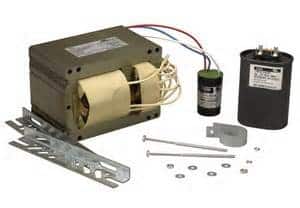Probe-start/pulse-start differences
Features Ballast Probe Start MH Pulse Start MH
Color White Brighter White
Efficacy (Lumens per Watt) 60-85 90-110
Lumen Maintenance 65% 75%
Lamp Life (hours) 10,000 15,000
Lamp Life (years) 2.5 4.0
Source: Department of energy
Other advantages of pulse-start ballasts include:
lifetime of up to 15,000 hours ¨C 50% longer than probe-start MH lamp of same wattage
maintain higher, consistent CRI than probe-start ballasts
superior cold-starting capability, starting at temperatures as low as -40 degree
re-start, referred to as re-strike, times can be four times as fast as probe-start MH lamps
MH lamp warm-up and restrike times
Lamp/ballast type Warm-up time (minutes) Restrike time (minutes)
Probe-start/magnetic 4 to 5 10 to 20
Pulse-start/magnetic 2 to 3 3 to 5
Ceramic/magnetic 2 to 3 10 to 20+
Quartz pulse-start/electronic 1 to 3 2 to 4
Ceramic/electronic 1 to 3 10 to 20+
Source: Department of Energy
New standards eliminate probe-start devices
The Energy Independence and Security Act of 2007 mandated significant changes for metal halide lighting fixtures using certain ballasts.
Sincere 2009, probe-start magnetic ballasts and lamps for operation of lamps up to 400 watt metal halide ballasts were virtually eliminated from new luminaires to meet new efficiency standards.The law requires a minimum ballast efficiency of 88% for pulse start ballasts and a minimum ballast efficiency of 94% for magnetic probe start ballasts. Compliant luminaires now bear a capital ± printed in a circle for their packaging and ballast label.
